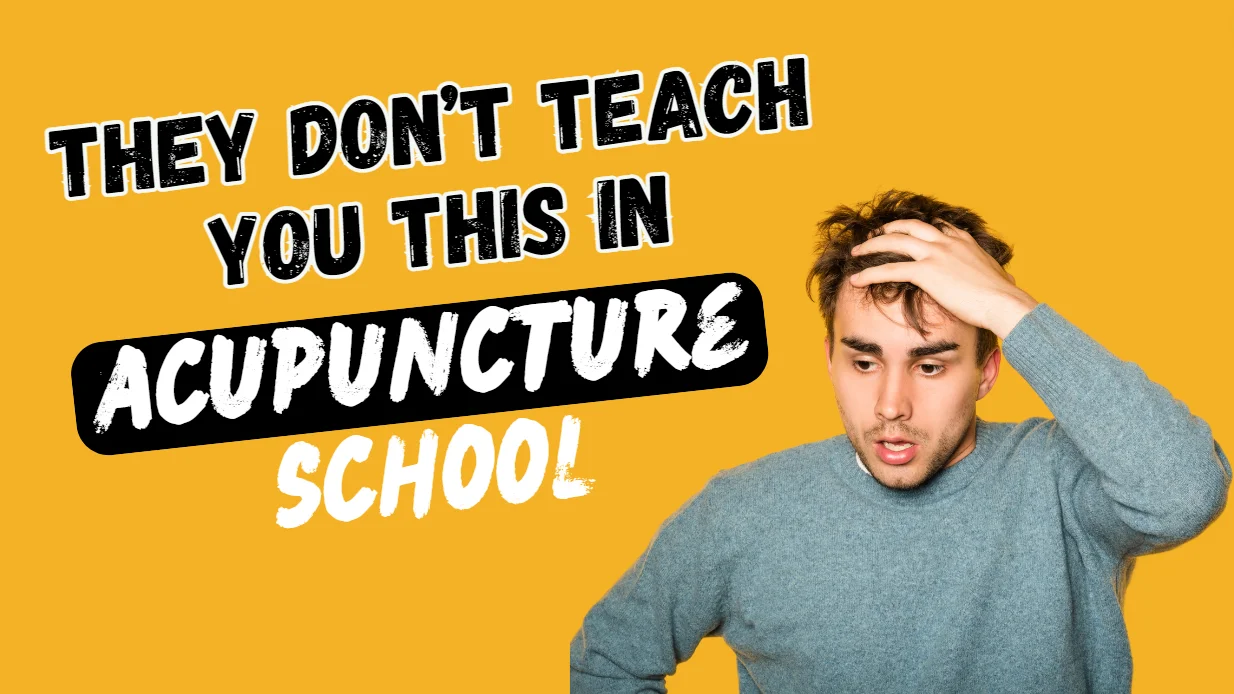
35: They Don’t Teach You THIS in Acupuncture School (Podcast)
Listen on Apple Podcasts Listen on Spotify Listen on YouTube Listen on Amazon Music
🔗 Links mentioned in this episode:
LUO Connecting Acupuncture Points
Show Notes
I’ve hosted a couple of episodes where students asked me questions, and they were a big hit with everyone. For the third time, I have a student, who just finished and is about to start practicing, asking me some incredibly insightful questions.
He asked me how to conduct consultations to get the best results for patients. We discussed how to handle hypersensitive patients and strategies for needling or approaching those who can barely be touched. I hope you enjoy today’s episode and find it helpful, especially if you’ve had similar questions to my guest.
Mentoring Through Questions 🗣️
This time on the AcuPro show, Cristian, a recent graduate embarking on his specialty, takes center stage with his questions about patient consultations, the translation of Chinese medical terms, and treatment strategies.
Cristian kicks off the conversation by asking about the best ways to handle patient consultations effectively. I emphasized the importance of both pre-screening questionnaires and in-person consultations, sharing my experiences from the pre-digital era to highlight the balance between efficient patient assessment and thorough diagnosis.
Questions on Addressing Patient Communication 💬
Cristian also faced challenges in translating complex Chinese medical terms for patients. My advice was to avoid overwhelming patients with TCM jargon. Instead, focus on explaining the root causes of their symptoms in relatable terms. For example, describing “Lung and Spleen Deficiency” as weakened immunity due to stress and poor nutrition often resonates better with patients.
Practical Application of LUO Points Questions📍
As we transitioned into discussing the application of LUO points, Cristian asked if they should always be used in pairs. I explained that it depends on the condition being treated. For digestive issues involving both the Stomach and Spleen, using Stomach 40 and Spleen 4 together is beneficial. However, for other conditions like interstitial cystitis, using only the relevant LUO point, such as Heart 5, might be sufficient.
Extraordinary Vessels Questions and Their Significance ✨
The discussion then shifts to extraordinary vessels and their applications. I explained the Chong Vessel. The Chong is linked to the sea of blood and interacts with points on main meridians such as the Spleen and Stomach. This vessel’s function in TCM is crucial for treating blood-related conditions, like insufficient breast milk production.
Cristian finds clarity in understanding that points on extraordinary vessels have dual functions – their primary meridian function and their role within the vessel pathway. This simplified explanation helps him grasp the vessels easily.
Handling Hypersensitive Patients 😓
Lastly, Cristian shared a case with me, and a particularly challenging one at that. He is working with a hypersensitive patient who can’t tolerate needles. I suggested starting with non-invasive treatments like acutonics and ear seeds, combined with acupressure on calming points like Kidney 1 and Kidney 6. I also stressed the importance of addressing any underlying emotional trauma that might be contributing to the hypersensitivity.
Emotional Well-being and TCM 🧘🏾
Clara highlights that hypersensitive patients often have deep-seated emotional trauma, which manifests physically. Additionally, I encouraged integrating calming practices such as guided meditation, gentle acupressure, and dietary adjustments to aid in their treatment.
Cristian’s anecdote about his patient using an alarm to remember to breathe underscores the intertwined nature of mental and physical health, something TCM practitioners must consider.
Disclaimer
The Acupro Show podcast and material shared through Acupro Academy is a subdivision of Natural Health Sense Incorporated. Designed solely for educational and entertainment purposes. The utilization of information from this podcast or any associated material is at the user’s discretion and risk. This content is not meant to replace the guidance of an acupuncturist. Nor Chinese medicine doctor, medical doctor, physician, or any qualified professional. It is not a substitute for proper diagnosis or treatment. As well as, users are strongly advised not to ignore or postpone seeking medical advice. For any existing medical condition with their healthcare professional. Regarding any health concerns.
Need the podcast transcript? Click here!
Share this article
Written by : AcuPro Academy (Clara)
6 Comments
Leave A Comment
Latest articles
January 13, 2026
January 13, 2026
January 13, 2026












Hi for exhaustion, low immune system it’s easy to explain by referring stress or lack of nutrition but how do you explain it for other cases. Like menopausal symptoms or urinary infection or ms etc
I answered you in your similar question 🙂
watch this: https://honeydew-starling-108216.hostingersite.com/acupuncture-practice-management-for-new-acupuncturists/
exhaustion or low immune system is pretty easy to translate it to western language ‘like not nourishing your body by not eating the right food etc.. But how do you explain or translate more complex diagnoses urinary problems or menopausal symptoms, neuropathy pain. like you know the zangfu diagnoses by questionaire but how do you translate that to your patient?
I created a video just for that 💝
Check it out here: https://honeydew-starling-108216.hostingersite.com/acupuncture-practice-management-for-new-acupuncturists/
Thank you, helped a lot and was fun because you´re so passionate about it. That makes me smile. Have a good life!
Thank you so much 🙂